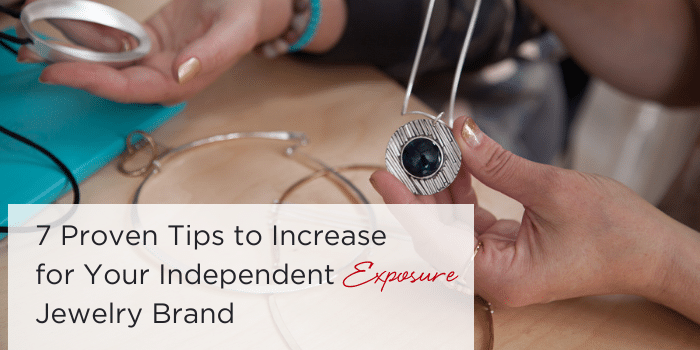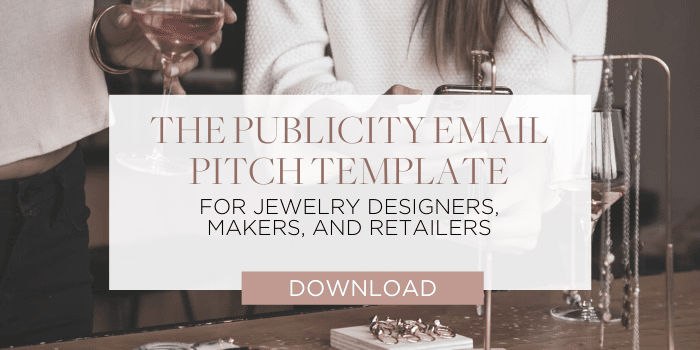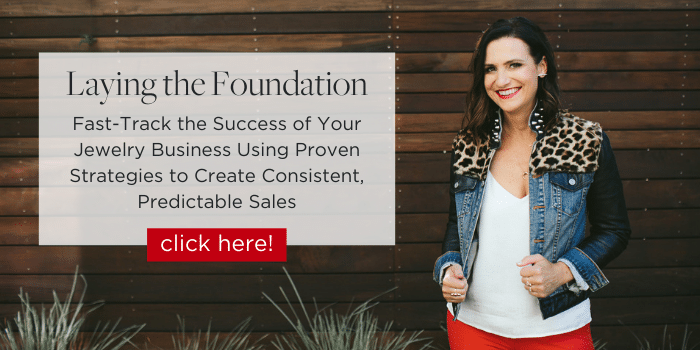7 Proven Tips to Increase Exposure for Your Independent Jewelry Brand

Updated: September 17, 2018
Independent jewelry brands have to focus on getting consistent exposure.
Why?
Because when you're going up against brands that have been in the business for decades (or more) you have to be top of mind to your dream clients.
Your dream clients are the ones who are a perfect match for your brand. They love hearing from you, buying from you, and sharing your brand with everyone they know.
But how do you get the attention of the press? I'm about to show you!
The good news:
Jewelry editors are always looking for new independent jewelry designers to feature in their writing and gift guides. One advantage of being somewhat “undiscovered” is that you're more interesting than brands everyone already knows about. When you increase exposure for your independent jewelry brand the right way, you start seeing increased sales, too!
You can be alluring in your own way.

1. Keep Your Messages Short and Sweet
It’s best to email an editor with a short message and a few low res images included in the body of the email. No one reads long emails from people they don't know. Your chances of getting a response from a short, to-the-point email are much higher than chunks of paragraph text and links.
Make it easy for them. Don't make them click around to get information, that takes too much time. Give them everything they need to decide if they want to follow up with you, otherwise they never will.
2. Different Strokes for Different Folks
Editors of different magazines are looking for different elements in their coverage of young talent or new jewelry designers. Departures or Town & Country pay attention to the story and look for the most extravagant, one of a kind pieces. A fashion title like Bazaar or Vogue may be more interested in how the designs relate to runway trends. In Style or PeopleStyle may look for what's worn on the red carpet or how readers can get the red carpet look.
Modify and personalize your pitch for different magazines. Also, you have to get really honest about what's a good fit and what isn't. You might be dreaming of getting featured in Vogue, but is your jewelry really for the Vogue reader? If the answer is yes, then keep trying!
3. Photography is Key
Photography is very important for a jewelry brand. Most editors won't accept your jewelry if your photography isn't easily usable. This is why white and transparent backgrounds are so valuable.
In the “digital first” age of media, writer and editors want something that's ready to post when they are.
Having high quality lifestyle photographs available for them to use, allows you to have control over how your jewelry is positioned in the feature. Plus, again, it makes it easier for an editor to drop your story into an upcoming issue.
4. Research Your Target
Pitching an angle or story to the editors may backfire, but it depends on the magazine. When you do enough research first, you can actually help the editor if they're in a pinch for what to feature. Be mindful of timing and which issues and topics they're working on. If you know they're covering trends, pitch them what's new for Fall fashions and it could be a win-win.
Fashion magazines are more product driven, but lifestyle media may be a great chance to emphasize your brand journey. Keep in mind, price point are very relevant and helpful to assess if it's a good fit for the story they're working on.
5. Send Samples Only When Requested
Jewelry samples are rarely requested without it being for a specified shoot because magazines do not want to assume liability for more jewelry than necessary. When an editor requests a sample for a shoot, you will receive a sample request form to provide value, materials etc. Some jewelry brands may provide their own form and contract for editors to complete.
Hand delivery of samples is the most common method. This cannot always be done, so make sure you insure the package and follow up until you get your pieces back.
6. Be Persistent & Consistent
Don't be put off by “non-response” and keep checking in with editors via email. If you've done your research and know your line is a great fit for the media outlet, it's essential you consistently follow up with them. Many editors don't have time to even say thank you, so don't be offended if you don't hear back.
When they have a relevant story or their plans are consistent with the images you provide, they'll remember you if you stay top of mind. The more often (within reason) you reach out to them, the more opportunity you have to be noticed.
7. Editors at Trade Shows
It's important to distinguish between what's appropriate to show to retailer buyers versus editors when you're at a trade show. Editors are looking for pieces for immediate inclusion in stories so make sure you show them new items and current collections that are at retail.
Remember, don’t be turned off if you don’t hear back from an editor. Continue to build momentum and be persistent. Your pieces will be featured soon if your dream client aligns with the readers of a media publication.
Have you tried any of these tips?

